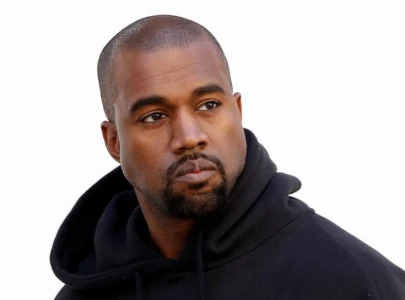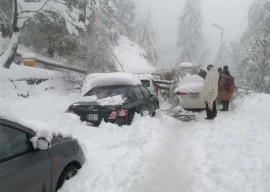1727761674-0/BeFunk_§_-(98)1727761674-0.jpg)
Russian President Vladimir Putin has signed a decree mandating the conscription of 133,000 new servicemen as part of Russia's autumn military draft.
The draft will take place between October 1 and December 31, 2024, and targets Russian citizens aged 18 to 30 who are not in the military reserves.
The decree was published on Monday, September 30, 2024, and came into immediate effect.
According to the order, the conscripts will serve for 12 months in military units stationed within Russia.
Vice-Admiral Vladimir Tsimlyansky, head of Russia's conscription office, assured that none of the new recruits would be deployed to the conflict zones in Ukraine's annexed territories, referred to by Moscow as the "new regions."
Russia continues to label its invasion of Ukraine as a "special military operation," though Kyiv and its allies regard it as an illegal land grab.
The autumn conscription comes amid heavy losses sustained by the Russian army in the ongoing war in Ukraine, where fighting has been relentless since Russia’s full-scale invasion in February 2022.
Western intelligence estimates suggest that Russian military casualties have been significant, putting pressure on Putin’s regime to replenish troop numbers.
This latest conscription effort follows a September 2024 order by Putin to increase the size of the Russian military by 180,000 troops, pushing the total active-duty force to 1.5 million, making it the second-largest military in the world, after China's.
Putin justified this military buildup by citing growing threats to Russia’s western borders, particularly from NATO allies backing Ukraine.
Russia's military leadership, reportedly facing internal pressure, has been advocating for a broader mobilization to sustain operations in Ukraine.
However, public sentiment in Russia regarding mobilization is divided, with many citizens opposed to the war and potential conscription.
Putin’s decree also orders the discharge of soldiers, sailors, and sergeants whose conscription period has ended, marking a regular turnover in personnel.
This autumn draft comes as Russia continues to struggle with manpower needs in the face of increasing Ukrainian resistance, bolstered by military aid and support from NATO countries.
As the conflict drags on, Russian military strategy appears to be focusing on consolidating control over the regions it annexed in southeastern Ukraine in late 2022.
These annexations, which were condemned by most of the international community, have led to increased tensions between Moscow and the West.
In a related development, Putin recently reiterated Russia’s nuclear doctrine, warning that any attack on Russia by a non-nuclear state, if backed by a nuclear power, would be considered a joint attack on the Russian Federation. Putin also emphasized that Russia would not hesitate to use nuclear weapons if its own or Belarus’ security were under threat.
Moscow has deployed tactical nuclear weapons in Belarus, a close Russian ally, and has expressed concern over what it perceives as growing provocations near the Belarusian border.
The Kremlin’s tough stance on nuclear weapons follows increasing diplomatic and military pressure from Western countries, including the United States and NATO, who have condemned Russia’s invasion of Ukraine and have backed Kyiv with military aid.
Despite calls from world leaders, including US President Joe Biden, for Russia to de-escalate the conflict, Putin shows no sign of backing down
. Recent diplomatic efforts to negotiate a peace settlement have largely stalled, with both sides entrenched in a prolonged conflict that has now lasted nearly two years.
While Ukraine continues to fight to reclaim its occupied territories, Putin’s new conscription effort indicates that Moscow is preparing for a prolonged conflict.
The Kremlin appears focused on maintaining its military capabilities amid international sanctions and mounting casualties.
Whether the new draft will be sufficient to sustain Russia's war efforts remains to be seen, but it is clear that the war in Ukraine has no immediate end in sight.
This conscription order, along with Putin’s reaffirmation of Russia’s nuclear posture, further escalates tensions in a conflict that has already had far-reaching geopolitical consequences.
With the ongoing war, Russia's aggressive military expansion continues to stoke fears of broader instability in the region, raising concerns about future confrontations between Russia and NATO-backed Ukraine.








1736409688-0/sidra--(51)1736409688-0-270x192.webp)
1736410785-0/Express-Tribune-(5)1736410785-0-270x192.webp)
1736419163-0/sidra--(55)1736419163-0-270x192.webp)















COMMENTS
Comments are moderated and generally will be posted if they are on-topic and not abusive.
For more information, please see our Comments FAQ